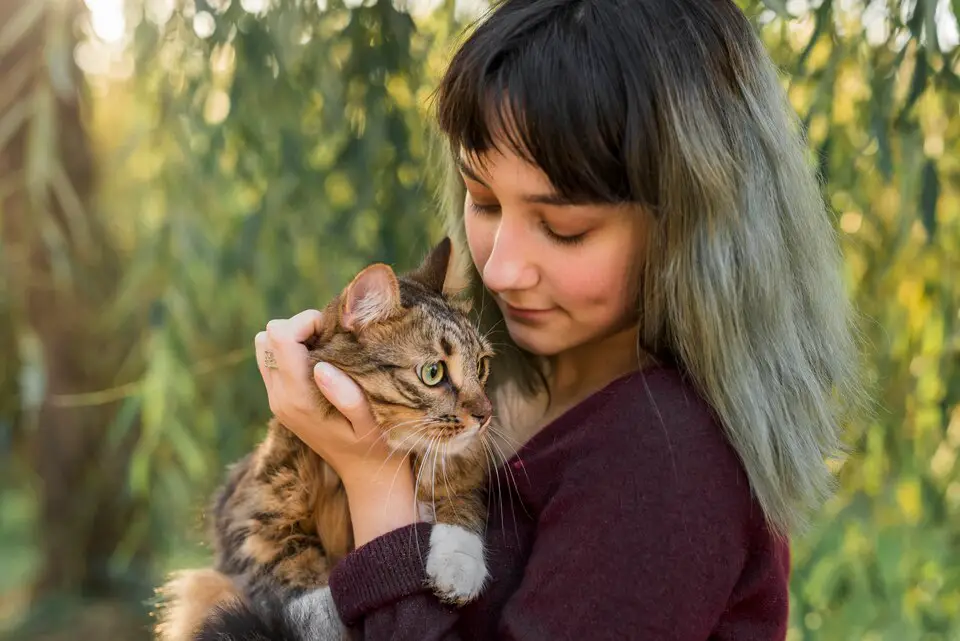Cats have long been companions to humans, their enigmatic behavior often leaving us intrigued and mystified. This article dives into the fascinating world of feline-human relationships, uncovering the science behind the bond that forms between these two species. While cats are known for their independence, there is much more to their attachment to humans than meets the eye.
Understanding Attachment
Attachment is a fundamental aspect of human-animal relationships, and it plays a significant role in the bond between cats and humans. In these relationships, attachment refers to the deep connection and affection that develops between a cat and its human caregiver. While cats are often associated with independence and self-reliance, they are not immune to forming profound attachments.
For cats, attachment is built on trust and positive interactions. It is a mutual connection that benefits the feline and the human involved. Understanding attachment is crucial for appreciating the unique dynamics of feline-human relationships.
Attachment in Cats
Cats are often perceived as enigmatic and independent creatures, but beneath their seemingly aloof exteriors lies a deep capacity for attachment. Cats employ more subtle means than dogs, which might express their attachment with wagging tails and eager leaps.
They purr contentedly, a soothing vibration that communicates their comfort and affection. Kneading, where a cat rhythmically presses its paws against a soft surface, is another clear sign of attachment. This behavior, often seen in kittens while nursing is a comforting, nostalgic gesture that persists into adulthood.
Cats may also head-butt their owners gently, an endearing sign of trust and affection. These attachment cues might appear unremarkable, but they reveal how cats bond with their human companions. Scientific studies have explored these behaviors, shedding light on the nature of feline attachment.
Research has shown that cats form strong bonds with their owners, seeking their presence and displaying signs of distress when separated. The attachment between cats and humans is not one-sided; it is a mutual connection built on trust, affection, and shared experiences.
Attachment in Humans
The bond between cats and humans is not just a one-way street; it also offers profound benefits to people. Spending time with a beloved feline companion can lower stress, reduce blood pressure, and elevate mood. The release of oxytocin, often called the “bonding hormone,” occurs during positive interactions between humans and cats. This hormone strengthens the emotional connection between both parties, fostering feelings of trust, affection, and attachment.
Real-life stories show how cats have played pivotal roles in their human caregivers’ lives. Cats provide comfort during difficult times, offer companionship in solitude, and become pillars of support for those facing emotional challenges. The therapeutic power of cats extends beyond the physical, bringing solace and healing to those fortunate sufficient to share their lives with these remarkable animals.
The Complex Nature of Cat Attachment
Understanding the attachment between cats and humans requires acknowledging the multifaceted nature of feline behavior. Cats are known for their independence, sometimes leading to misunderstandings about their attachment to their human caregivers. Unlike dogs, which often display overt signs of affection, cats can be more reserved in their expressions.
Cats are territorial creatures, valuing their personal space and routines. However, within the boundaries of their chosen territory, they form deep and lasting attachments. They seek comfort, security, and companionship from their owners, often in subtle and understated ways. Recognizing and respecting these nuances is essential for strengthening the bond between cats and humans and ensuring a harmonious relationship.
Cats’ independence and attachment may seem paradoxical, but precisely, this complexity makes their companionship so enriching. They offer their devotion on their terms, and in doing so, they invite us into their unique world of feline attachment, where trust is earned, affection is cherished, and the rewards are immeasurable.
Q&A Section
1. What is attachment in the context of cat-human relationships?
Attachment in cat-human relationships refers to the deep emotional bond that shapes between cats and their human caregivers. It involves mutual affection, trust, and a sense of security.
2. How do cats express attachment to humans?
Cats express attachment through subtle behaviors like purring, kneading, head-butting, and staying close to their owners. These actions signify their comfort and affection.
3. Are there scientific studies on attachment between cats and humans?
Yes, scientific research has explored attachment behaviors in cats. Studies have demonstrated that positive interactions between humans and cats release oxytocin, strengthening the bond.
4. What role does oxytocin play in cat-human relationships?
Oxytocin, often called the “bonding hormone,” is released in humans and cats during positive interactions. It fosters feelings of trust, affection, and attachment.
5. Why are cat attachment behaviors often misunderstood or underestimated compared to dogs?
Cat attachment behaviors are subtle and independent, which can make them less obvious than the overt expressions seen in dogs. This subtlety can lead to misunderstandings about a cat’s attachment to its owner.
Conclusion
The connection between cats and humans is difficult and scientifically validated. While cats have a reputation for independence, their attachment behaviors are undeniable. Recognizing and nurturing this attachment enhances our understanding of these enigmatic creatures and deepens the meaningful relationships we share with them. From the gentle purring to the soothing presence during challenging times, cats enrich our lives in ways that science is only beginning to unveil fully.

